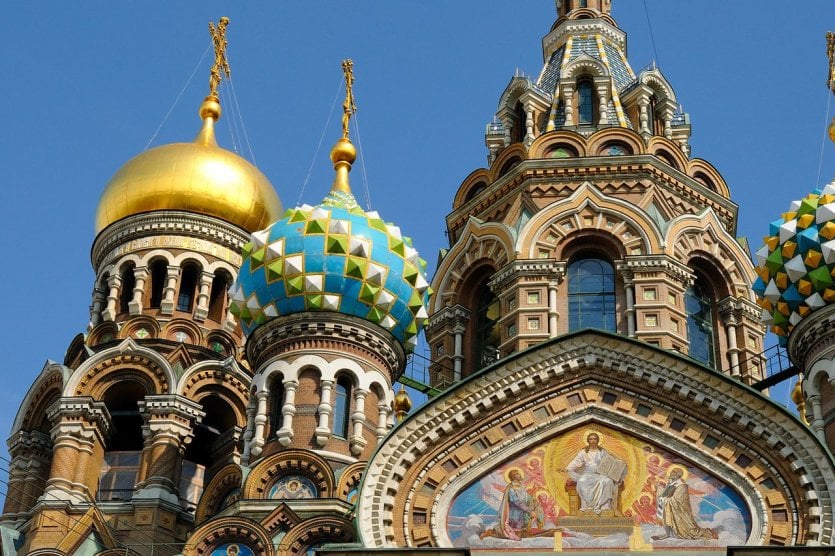
Second largest city after Moscow, St. Petersburg is certainly the most beautiful of all Russian cities. Created in the 18th century by Peter the Great, it embodies the imperial spirit of the time, which was later magnified by Elisabeth Petrovna and Catherine II. Palaces, sumptuous buildings, bulbous cathedrals, museums, theatres, statues, colonnades, a magnificent river and so many canals... Everything here is nothing but splendour and delight, whether the city is draped in its winter coat or illuminated by the sleepless nights
The Winter Palace
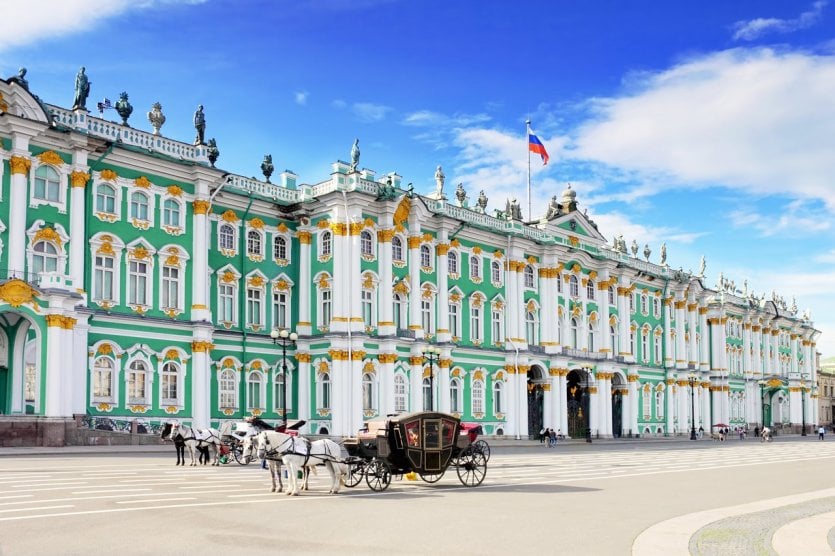
Built between 1754 and 1762 at the request of Empress Elizabeth, the Winter Palace was the residence of the Tsars of Russia. This magnificent monument with its green facade was designed in the pure Russian Baroque style and bears witness to all the excesses of the period. Stretching nearly 200 metres along the Neva River, it had no less than 1,050 rooms, 1,945 windows, 1,886 doors and 117 stairs. The richness of its ornamentation is spectacular, wherever you look, you will be amazed by columns, statues, bas-reliefs and sculpted ceilings. The Winter Palace now houses one of the richest museums in the world, the Hermitage Museum
The Hermitage Museum
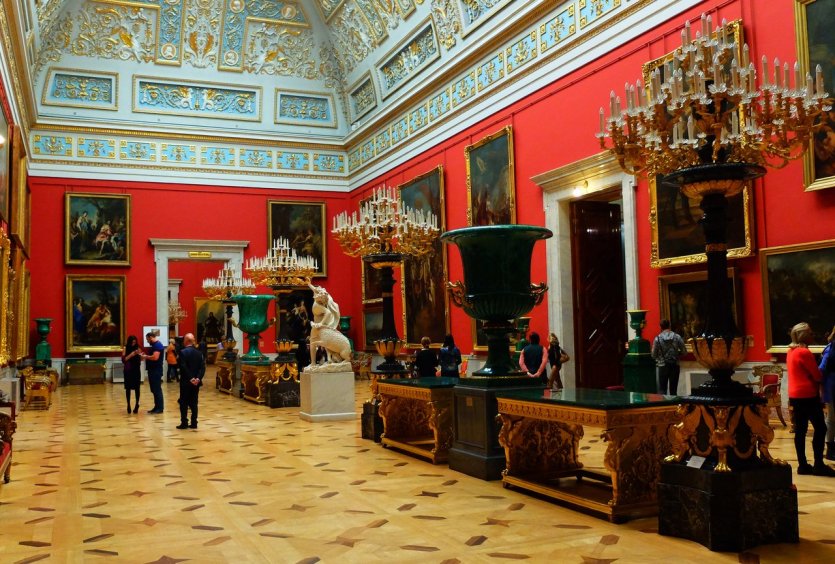
The richness of its collections is matched only by the splendour of its surroundings... The Hermitage Museum is the largest museum in the world in terms of exhibits: more than 60,000 works are on display and nearly 3 million objects are kept in the reserves. Covering two millennia of art and history, it houses works from all over the world, including pieces of Egyptian, Greek-Roman and Middle Eastern antiquities. The great names in painting are also included, such as Leonardo da Vinci, Rembrandt, Rubens, Matisse, Gauguin and Picasso.
The Nevski perspective
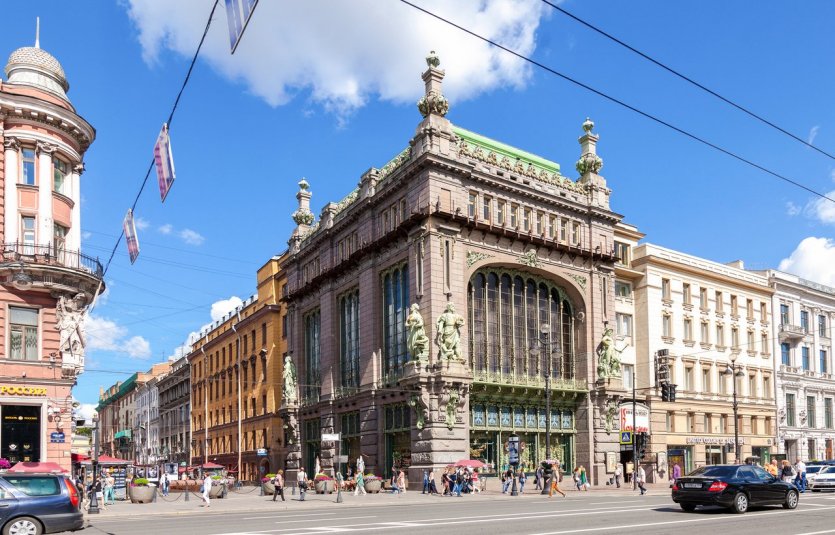
The Nevsky perspective - including Neva Avenue - stretches over 4 km from the Admiralty to Alexander Nevsky Square. On this major axis of the city, there are many shops, bars and restaurants, museums and art galleries, theatres and cinemas, as well as a multitude of palaces and churches, including the magnificent Notre-Dame-de-Kazan church. During the walks, do not miss to greet the Book House, the former Singer Company building, the Anitchkov Bridge and the obelisk erected in honour of Leningrad.
Saint-Isaac Cathedral
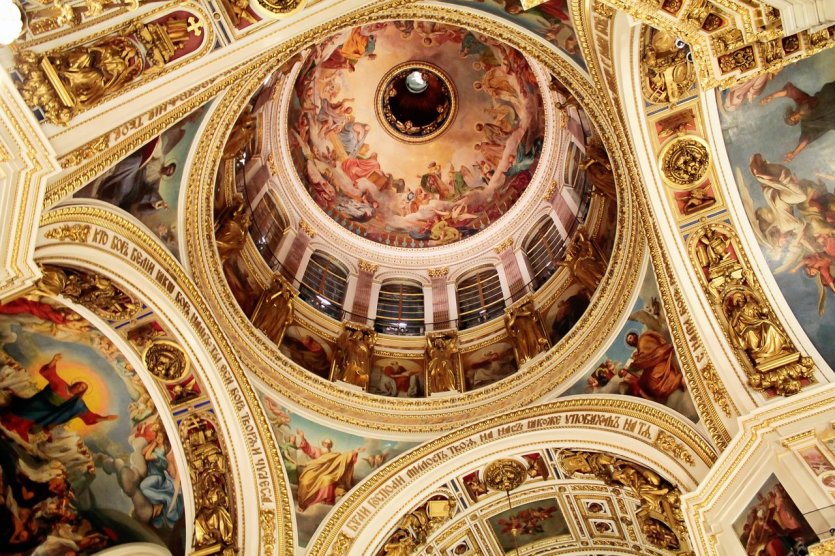
Built in the 19th century, Saint-Isaac Cathedral is the third largest cathedral in Europe. For many years, it orchestrated the religious life of the city before being looted during the 1917 revolution and then transformed into a museum. Its interior decoration is lavish, its walls are covered with paintings, frescos, sculptures, bronze and lapis lazuli. More than one hundred kilograms of gold were used to gild its dome, which rises to a height of 102 m, offering a magnificent panoramic view of the city.
The Great Palace of Peterhof
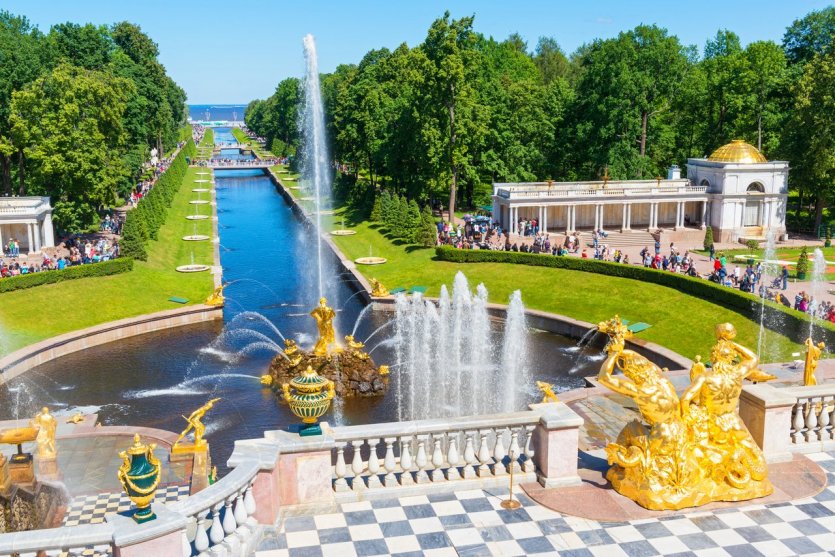
Nicknamed the "Russian Versailles", the Peterhof Grand Palace was the emperors' summer residence, erected 30 kilometres from the city. This complex of palaces and gardens, built under Peter I, is a jewel of refinement, both in terms of its abundant interior decoration and the presence of its 102 hectares of parks. French and English gardens, waterfalls, fountains, pavilions and golden statues enliven this immense landscaped area, which has nothing to envy the Versailles estate.
Peter and Paul Fortress
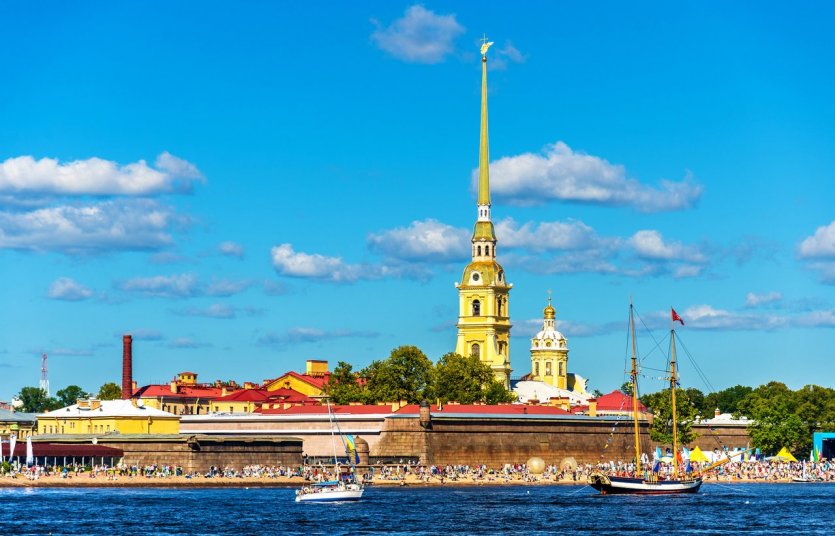
The birthplace of the city, the Pierre-et-Paul fortress was the first building in St Petersburg, built in 1703 on the island of Lièvres. Its initial function was to protect Russia's main maritime access, but it was mainly used as a prison for opponents of the regime. Nowadays transformed into a historical museum, it unveils a series of buildings, and in particular the Pierre-et-Paul cathedral, the burial place of the Russian emperors, including those of Peter the Great and Catherine of Russia. Every day at noon, a cannon is fired from one of its bastions.
Saint-Sauveur-sur-le-Sang-Versé Cathedral
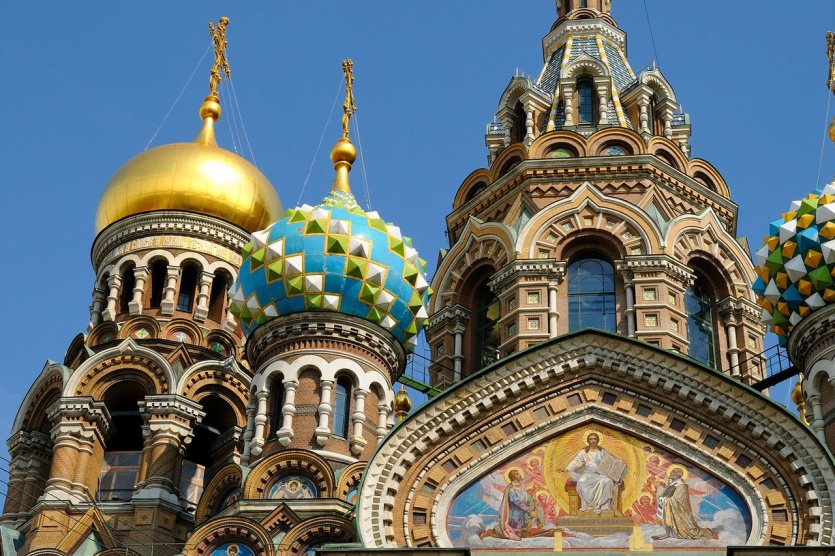
The Orthodox Cathedral of Saint-Sauveur-sur-le-Sang-Versé is a most picturesque building with its polychrome bulbs and twisted domes! Built on the model of the Cathedral of Basil the Blessed in Moscow, it is the perfect example of the neo-Russian style with this particularity as a bonus: it houses more than 7,500 m² of mosaics. Moreover, it is not really a place of worship but a museum dedicated to mosaics and above all a memorial site, since it was built in memory of Tsar Alexander II, murdered in place in 1881.
Cruise on the Neva River
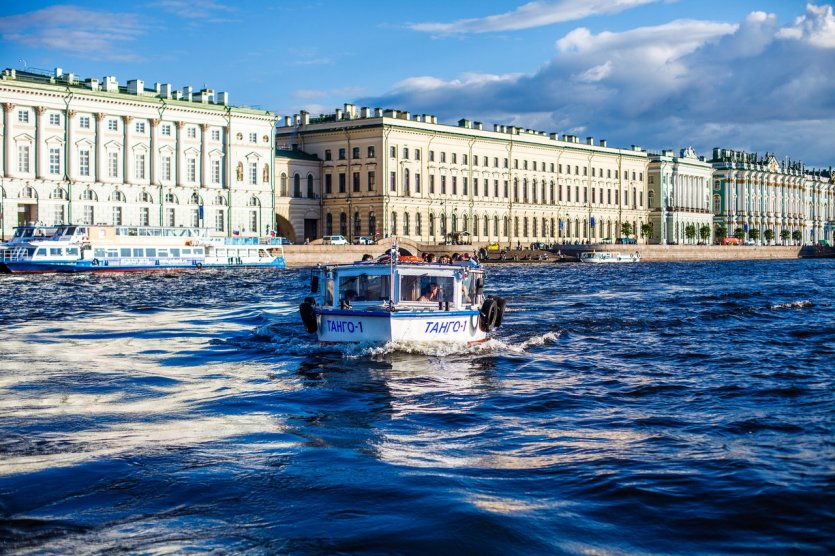
St. Petersburg is crossed by the Neva River, which flows from Lake Ladoga to the Gulf of Finland at the end of the race. The city's largest buildings were reflected in its waters, crossed on either side by multiple bridges. It is thus possible to greet them by boarding a ship for a cruise, except when the Neva freezes over between mid-December and early April. A unique experience that some people pursue along the Volga River to reach Moscow.
The Mariinsky Theatre
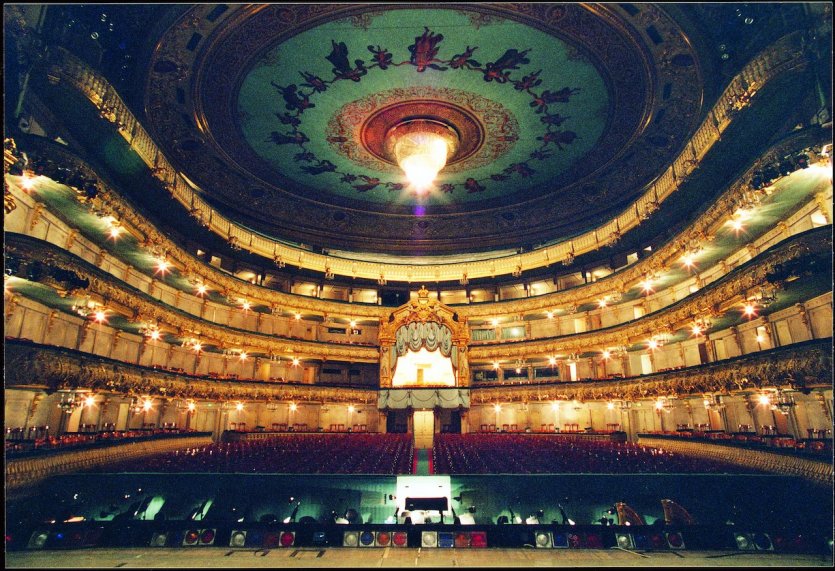
Built in 1860 under the reign of Alexander II, the Mariinsky Theatre is above all a treasure of Renaissance and Baroque architecture. Crystal chandeliers, gildings, velvet seats, painted ceilings, balustrades... its interior decoration dazzles even before the curtain rises. The greatest names in opera, classical music and dance have performed on this internationally renowned stage, which is still pursuing its vocation. If you are unable to attend a performance, please note that guided tours are available.
The Nuits Blanches
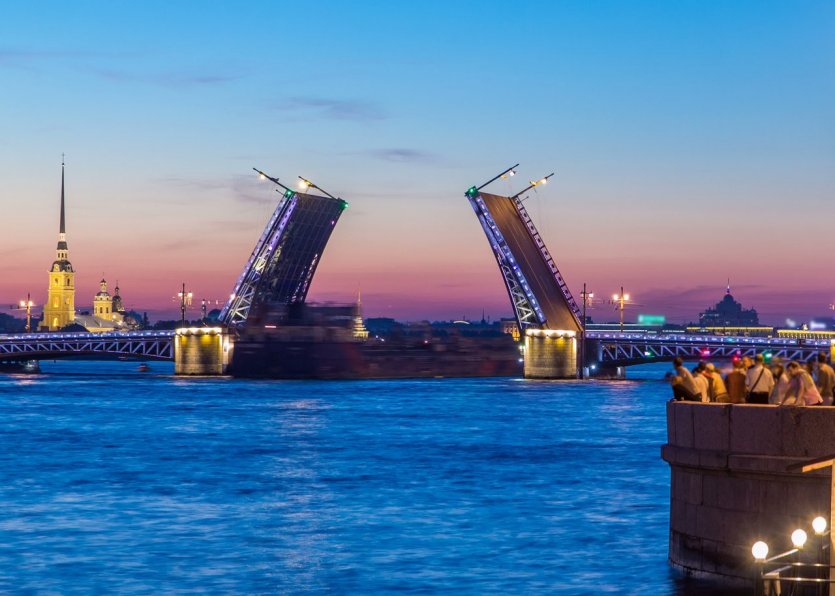
From June to mid-July, St Petersburg lives to the rhythm of sleepless nights where days last 18 hours and nights of 6 hours remain clear. During this period, the city never seems to sleep bathed in this mysterious atmosphere conducive to dreams and festivities of all kinds. It is at this time that the Festival des Nuits Blanches takes place with classical music concerts organised throughout the city and often in the open air. This is the ideal time to visit St. Petersburg but also the time when it is most crowded by tourists!


